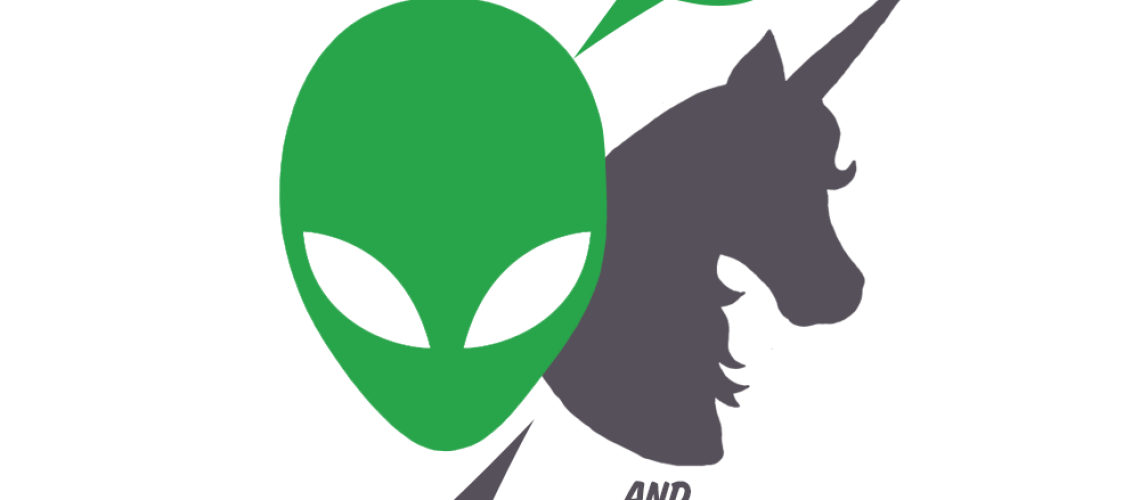Welcome to the latest installment of my comics review column here at Skiffy & Fanty! Every month, I use this space to shine a spotlight on SF&F comics (print comics, graphic novels, and webcomics) that I believe deserve more attention from SF&F readers.
This month, the SFFnal awards season is upon us once again, so I’m going to follow up on a similar post I made last year and recommend some candidates that might otherwise be overlooked that I believe are worthy of your Best Graphic Story Hugo nominations! (These reviews contain spoilers!)
Abbott
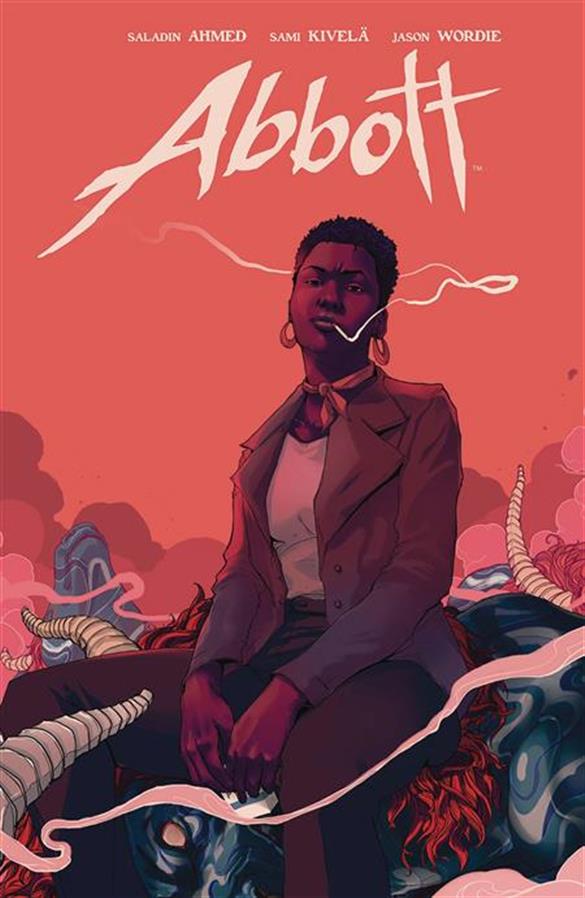
Created and written by Saladin Ahmed; art by Sami Kivelä; colours by Jason Wordie; lettered by Jim Campbell; cover art by Taj Tenfold; published by Boom! Studiosan
My feelings about Abbott aren’t exactly a secret; I’ve reviewed the series twice for Skiffy & Fanty, once when the first two issues were out and I didn’t know how it was going to end, and again when the collected volume was published.
You can read one or both of those reviews to see the depth of my effusiveness. In brief? Abbott is a remarkable historical urban fantasy, with a fascinating, believably flawed but deeply engaging protagonist, and an evocative depiction of a time, place, and people that don’t get explored enough in comics or in SF&F.
Saladin Ahmed has been having amazing and entirely deserved success in comics recently; it’s my hope that his high-profile — and, to be clear, very good — work on various Marvel series doesn’t overshadow this truly excellent work. I kind of suspect that when the nominations are in, more than one Ahmed-written series will be on the final Best Graphic Story Hugo ballot. I just hope Abbott is one of them.
Hell’s Kitchen Movie Club Hanukkah Special
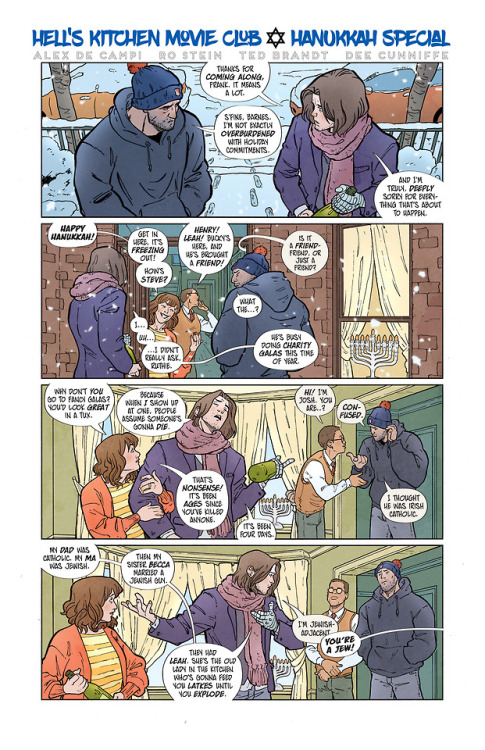
Written by Alex de Campi; art by Ro Stein and Ted Brandt; colours by Dee Cunniffee; published online at Alex de Campi’s website.
In my most recent round-up of SFFnal webcomics I love, there were a couple that I neglected to mention, for one reason or another. One of them was Hell’s Kitchen Movie Club, a very irregular series that’s only had a few installments since its inception. It was supposed to be exactly what it sounds like: Frank Castle and Bucky Barnes — the Punisher and the Winter Soldier — hanging out and snarking about movies together.
And, I mean, that sounds great, doesn’t it? But it immediately became something even better, something very powerful and moving.
The title of this episode sounds like a joke too, like it’s going to parody holiday specials and their tropes. And… it’s really not. Instead, it’s about biological family and found family, and identity and the persistence of identity, and love, and surviving trauma, and being able to be there, with your biological and found family, to celebrate identity, and love, and surviving.
To be clear, this is not a Marvel publication; it’s unofficial and non-commercial. So it occupies an interesting space, legally; I don’t think the Best Graphic Story Hugo has ever gone to a work that would probably be considered both protected use as satire, and at least technically a form of fan fiction. But maybe it’s time that changed, because regardless of the legal ownership of the characters, this is a profound and moving piece of speculative fiction in comics form.
It Will Be Hard
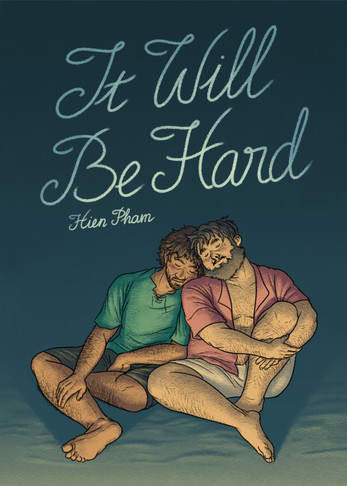
Created, written and drawn by Hien Pham; coded by Amos Wolfe; published by the creator
Hien Pham’s It Will Be Hard was one of my favourite surprises of 2018, a delightful find via the generous retweeting that happens through Comics Twitter. (Sharing, it turns out, really is caring!)
As I mentioned in my review, this quiet, low-key, relationship-driven story set in a secondary world was exactly what I needed and never knew I wanted; a sweet and inclusive sex- and body-positive narrative that adeptly expresses the complexity of relationships, of how challenging it can be to communicate your needs, and to truly listen to someone else communicate theirs, regardless of how much you love them.
This graphic novel, one that truly exemplifies the phrase “deserving wider recognition”, might be a Hugo long shot; the fantasy element is admittedly understated in comparison to many other potential nominees. But hey, I thought that My Favorite Thing Is Monsters was too much of a genre edge case too, and it got a nomination last year, so: This would be a fine addition to the ballot, and I once again encourage you all to read it, and consider nominating it.
Kaijumax Season 3: King of the Monstas
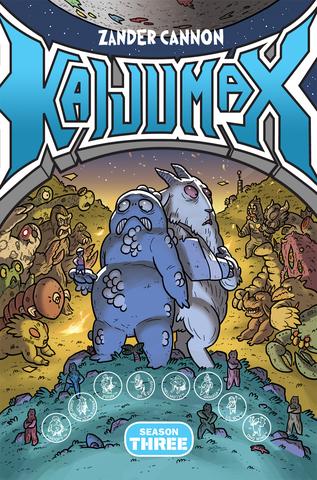
Created, written and drawn by Zander Cannon; published by Oni Press.
Zander Cannon’s Kaijumax is another series that I’m probably becoming tedious in reiterating my love for. If you haven’t read my earlier reviews of either the first two seasons or this volume, I expound at length therein.
In short? I’m genuinely astounded that Kaijumax has yet to receive a Best Graphic Story Hugo nomination. I can think of no more worthy series being published today. What sounds like it’s going to be a one-note joke, a forgettable parodic genre mashup, is actually a remarkable work of exploration and extrapolation, examining the carceral state and institutional prejudice in a world of giant monsters… that somehow also manages to still be wild, inventive fun that celebrates its source material.
This isn’t just one of my favourite SFFnal comics currently being published. It is, in my estimation, among the best of contemporary science fiction.
Moonstruck Volume 1: Magic to Brew
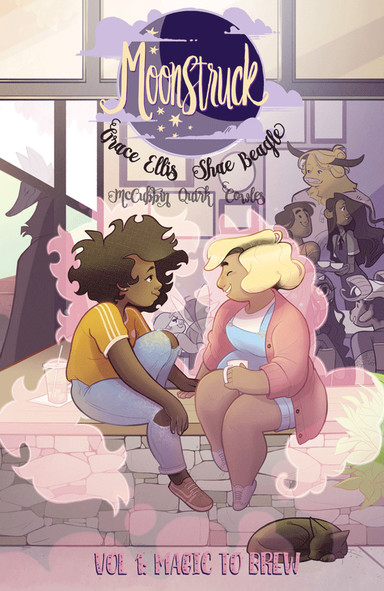
Written by Grace Ellis; art by Shae Beagle; additional art by Kate Leth; colours by Caitlin Quirk; lettered by Clayton Cowles; edited and designed by Laurenn McCubbin; published by Image Comics
This series got a fair bit of attention from the genre community when it launched and then… seemed to fall off of everyone’s radar? I’m not sure why I don’t see it being discussed. It may be that the story as it unfolded — as I suggested might happen in my review of the first two issues — simply couldn’t be all the things that everyone who was excited by its beginnings wanted it to be.
But Moonstruck, in the first major story arc contained in this collected volume, remains a sweet, charming delight, with more than enough depth and mystery around the edges to hold my attention. It’s positive, and fun, and I find myself increasingly drawn to that.
So yes, I’d very much like to see more recognition, from readers and from Hugo voters, for comics like this one, where the scale is perhaps smaller than an intergalactic war, and the stories are more driven by relationships, and that are about friendship and love and the need to communicate to make friendship and love work.
But what about all the other amazing comics?!
Right? There were so many worthy comics, graphic novels, and webcomics published in 2018! This was another amazing year for comics overall, and for SF&F in comics.
Obviously, my suggestions are based on my tastes. But also, for the purpose of this column, I decided to focus on works that I really do think merit wider recognition, ones that might not be on the radar of Hugo voters otherwise.
That’s why this list doesn’t include Monstress, even though I love Monstress — after two back-to-back Hugo wins, that series probably has a reasonably high profile among voters. Similarly, that’s why this list doesn’t include any Marvel or DC-published series; they just don’t need my help to get more notice in the same way.
Whatever comics you loved in 2018 — in print or online, floppies or graphic novels? If you loved them, nominate them! The more comics and graphic novels that are nominated, the more diverse and inclusive of the full breadth and depth of the medium the final Hugo ballot is, and that will be better for everyone.
I can’t wait until we see the final Best Graphic Story Hugo ballot. I bet that this will be another truly wonderful year of excellent nominees. Until then, my suggestions above are submitted for your consideration.
Acknowledgements and Disclosures: I would like to acknowledge that Toronto, and the land it now occupies, where I live and work, has been a site of human activity for 15,000 years. This land is the traditional territory of the Huron-Wendat and Petun First Nations, the Seneca, and most recently, the Mississaugas of the Credit River. The territory was the subject of the Dish with One Spoon Wampum Belt Covenant, an agreement between the Iroquois Confederacy and Confederacy of the Ojibwe and allied nations to peaceably share and care for the resources around the Great Lakes. This territory is also covered by the Upper Canada Treaties. Today, the meeting place of Toronto is still the home to many Indigenous people from across Turtle Island. I am grateful to have the opportunity to live and work in the community of Toronto, on this territory.
Alex de Campi and I have a number of mutual friends and acquaintances, and I once interviewed her for my blog. I don’t believe that this unduly biased my review. For the other works, detailed disclosures are in my earlier reviews, but briefly: I have no relationships that I believe biased my reviews.
In most cases, works are either free to read online or I purchased my own copies. I received a complimentary electronic review copy of It Will Be Hard from the creator.

